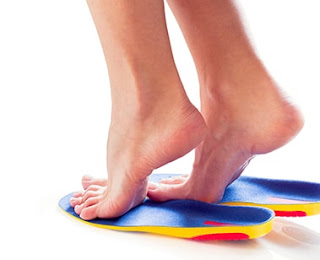Foot orthoses alter the kinematics and kinetics of gait. With increasing importance of evidence-based practice and with the permanent development of subtractive manufacturing and introduction of additive manufacturing, there is a growing need for the quantification of orthoses parameters. This paper describes a measurement method and protocol to quantify different parameters of a foot orthosis.
They used their TA.XTplus Texture Analyser to perform indentation tests on orthoses. Results showed the added value of the proposed technique as the parameters were not only defined by the material, but also by the shape. Download the research paper
Meanwhile, scientists from Arizona State University have been researching light-activated tissue-integrating sutures (LATIS) as surgical nanodevices.
Sutures are typically the primary means of soft tissue repair in surgery and trauma. Despite their widespread use, sutures do not result in immediate sealing of approximated tissues, which can result in bacterial infection and leakage. Non-absorbable sutures and staples can be traumatic to tissue, and the trauma can be exacerbated by their subsequent removal. Use of cyanoacrylate glues is limited because of their brittleness and toxicity.
In this work, laser‐activated tissue‐integrating sutures are described as novel nanodevices for soft tissue approximation and repair. They used their TA.XTplus Texture Analyser to perform tensile tests on fibre samples. The results of this study indicated that LATIS‐facilitated approximation of skin in live mice synergises the benefits of conventional suturing and laser‐activated tissue integration, resulting in new approaches for faster sealing, tissue repair, and healing. Read more
 Scientists from the University of Michigan have been investigating the mechanics of scaling-up multichannel scaffold technology for clinical nerve repair.
Scientists from the University of Michigan have been investigating the mechanics of scaling-up multichannel scaffold technology for clinical nerve repair.Peripheral nerve injury remains a large clinical problem, with challenges to the successful translation of nerve repair devices. One promising technology is the multichannel scaffold, a conduit incorporating arrays of linear microchannels, which has high open lumen volume to guide regenerating nerves towards distal targets.
To maximise open lumen volume, and scale-up scaffolds for translation, this study explored how mechanical properties were affected by material choice, microstructure and channel architecture. They used their Texture Analyser TA.XTplus to perform tests in compression and tension. The study demonstrated significant progress towards translation and will bring multichannel technology closer to the clinic. Read more
To find out more about Texture Analysis of pharmaceutical products, contact Stable Micro Systems today.
For more information on how to measure texture, please visit the Texture Analysis Properties section on our website.
 The TA.XTplus texture analyser is part of a family of texture analysis instruments and equipment from Stable Micro Systems. An extensive portfolio of specialist attachments is available to measure and analyse the textural properties of a huge range of food products. Our technical experts can also custom design instrument fixtures according to individual specifications.
The TA.XTplus texture analyser is part of a family of texture analysis instruments and equipment from Stable Micro Systems. An extensive portfolio of specialist attachments is available to measure and analyse the textural properties of a huge range of food products. Our technical experts can also custom design instrument fixtures according to individual specifications.No-one understands texture analysis like we do!
To discuss your specific test requirements, click here...
 |  |  |


No comments:
Post a Comment